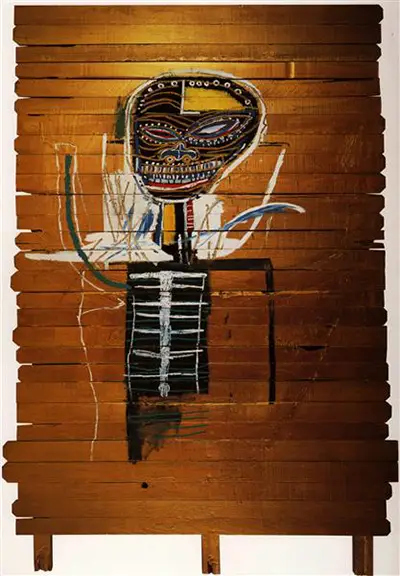This artwork features a myriad of wooden stakes to produce a canvas on which pencil and oil sticks are used over the top. We find here the typical figurative techniques of Basquiat, with a truly dominant head and many other elements not included. The figure is cropped at around the waist, with a spine system delivered with white strokes of the oil stick over black paint. The arms are thin single lines, almost like an octopus throwing out its suckers in a menacing way. The head is decoratively detailed, with patterns of circles across the forehead and small blocks of colour around the mouth. The eyes are sinister, narrow and minus any pupils. It is these specifically that will remind some of traditional African sculpture, as well as the free use of bright tones which contrast beautifully against the black and white tones used elsewhere. Colour has always been an important element in art history, but has been particularly so within contemporary art.
Western art had made use of African art as inspiration for several centuries but it always felt a little more authentic when it was an artist with African roots who was doing it. Basquiat also drew in other influences too, and was not ashamed to openly discuss his love of some of the old masters such as Leonardo da Vinci and Titian, for example. Most of his colleagues in the New York art scene would also have been white and he did take some ideas from them over time, as well as passing his own innovations back in the opposite direction too. He offered something truly unique to this group of artists who embraced his work and supported against any opposition that he might experience from more traditionally minded individuals.
The New York School helped to put this city ahead of the rest of the world for a number of years, contributing some groundbreaking art which was truly inspiring and influential. This marked an important point at which North America was starting to take over from Europe in bringing in new movements, when for many centuries previously it had very much following. These changes have occurred before, but previously it would be from one European nation to another, such as the Italian Renaissance which then led onto the Dutch Golden Age and the French Impressionists for example.


